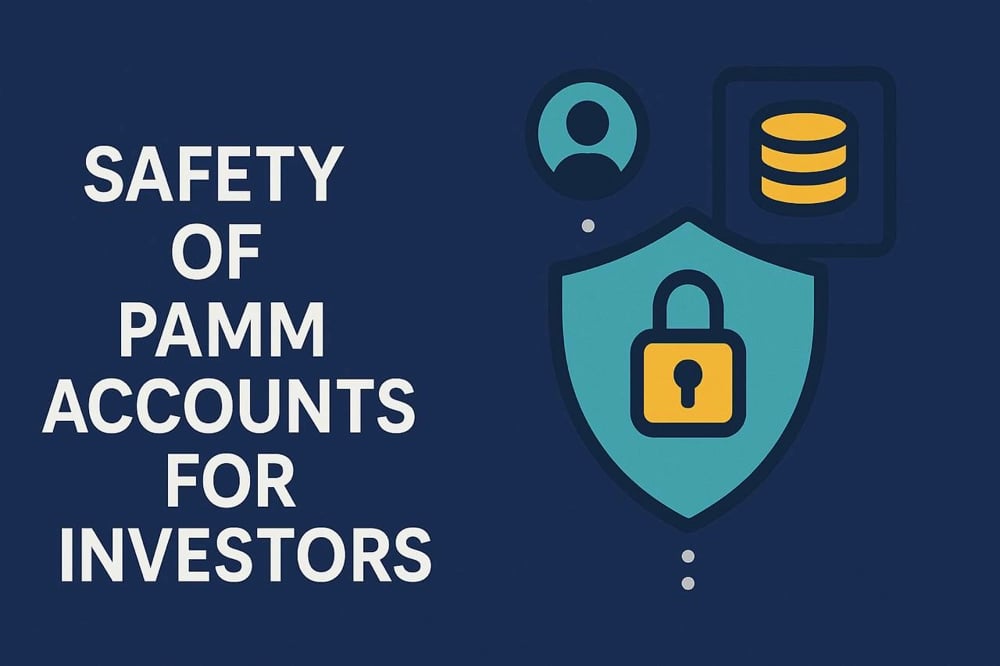Safety of PAMM Accounts for Investors
PAMM (Percentage Allocation Management Module) accounts give investors access to managed trading strategies without needing to trade themselves. However, understanding the safety of PAMM accounts is crucial before committing any capital. Let's explore the main factors influencing their reliability.
What Makes a PAMM Account Structurally Safe?
At their core, PAMM accounts are designed to separate investor capital from direct market execution. The trader operates the account, but cannot withdraw investor funds. This built-in separation of control gives investors the ability to manage exposure, set limits, and withdraw funds at any time.
If you're unfamiliar with this structure, the article what is a PAMM account provides a full overview.
Legal Framework and Regulation
The safety of any investment begins with legal clarity. PAMM accounts may or may not be regulated depending on the jurisdiction. In tightly regulated markets like the EU or Australia, licensed brokers offering PAMM services must adhere to transparency and capital adequacy rules.
However, the legal status of PAMM accounts varies significantly across countries. A deeper breakdown by region is available in our guide on PAMM account legality.
Working only with regulated brokers and verifying the platform’s licensing status should be your first line of defense.
Risks That Impact Safety
Legal compliance doesn’t eliminate risk. Investors must assess the trading strategy's risk profile, including:
Maximum drawdown — to gauge how much the account has lost during downturns
Use of leverage — which amplifies both gains and losses
Consistency of returns — erratic profits may signal poor discipline or overfitting
Each of these factors is discussed in detail in our analysis of the main risks of PAMM account investment.
Is a Safe PAMM Account Always Profitable?
No. While safety mechanisms reduce the likelihood of fraud or catastrophic losses, profitability depends on the manager’s performance. Even a low-risk strategy can produce poor returns, and vice versa.
You can explore how profit potential is evaluated using historical data, Sharpe ratios, and drawdown metrics in our article on PAMM account profitability.
Transparency and Investor Control
One of the most attractive features of PAMM accounts is investor transparency. Platforms typically display the trader’s history, open positions, and performance data. Investors can allocate or withdraw funds freely — which adds another layer of security.
For a broader understanding of these platform features and how they protect investor capital, refer to our article explaining how PAMM investments work.
Summary: Maximizing Your Safety as a PAMM Investor
To protect yourself while using PAMM accounts:
Choose licensed brokers with audited PAMM platforms
Check historical performance metrics of each trader
Avoid unrealistic returns and unverified track records
Monitor your account regularly rather than “set and forget”
The combination of regulation, transparency, and responsible investor behavior is what makes a PAMM account truly safe.
FAQ
What are PAMM accounts and how do they function?They allow investors to allocate funds to a trader’s strategy without granting withdrawal access. The system distributes gains or losses proportionally. Learn more about how PAMM accounts work.
Are PAMM accounts legal in all countries?No — regulations vary. Some countries require specific licensing, while others lack oversight. Review our jurisdictional guide on the legal status of PAMM accounts.
What risks do PAMM accounts carry?Besides potential trader underperformance, risks include drawdowns, leverage exposure, and platform insolvency. Full risk analysis can be found in our article on PAMM investment risks.
Is it possible to make money with a PAMM account?Yes, but results vary based on the manager. We explain what affects outcomes in our guide to PAMM profitability.
What does PAMM stand for in trading?PAMM means “Percentage Allocation Management Module.” It's a method for pooled fund management with proportional profit and loss distribution. We explain it in detail in the article what is PAMM in trading.









Comments
Strategic capital deployment like this is catalyzing long-term transformation in automation